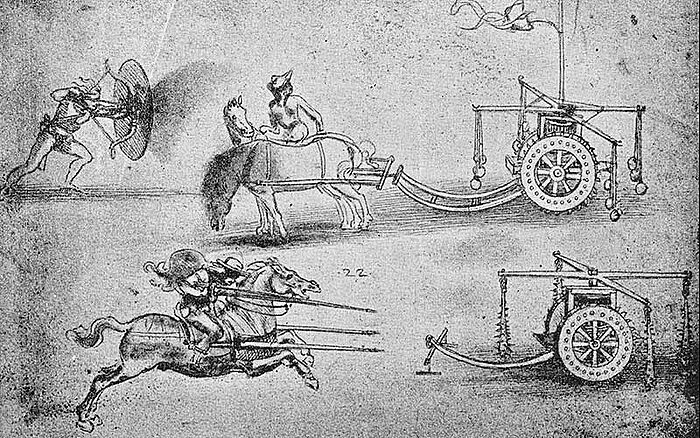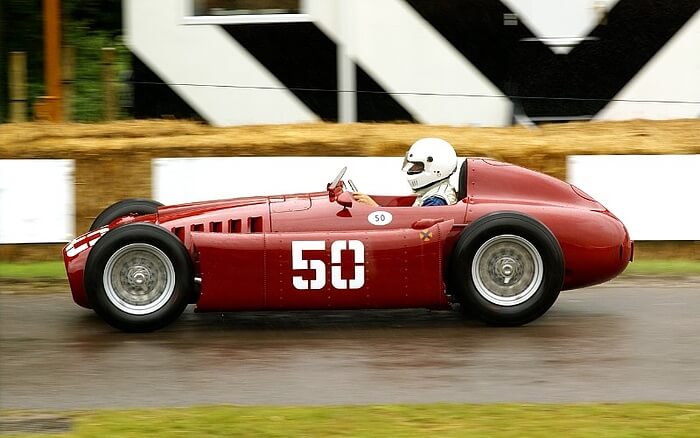Everyday IP: The iconic elegance of Italian cars
If you wanted to make a list of the most creative talents in Italian history, you would gather a host of names ranging from Michelangelo and Leonardo da Vinci to Federico Fellini and Sophia Loren. But you would be remiss in your efforts if you did not mention the greats of Italy's automotive industry: Enzo Ferrari, Ferruccio Lamborghini and the Maserati brothers, to name just a few.
In terms of overall global economic impact over time, one can argue that the most influential figures in Italian cars were Giovanni Agnelli and the other co-founders of Fiat. After more than a century of evolution, the company founded in Turin in 1899 has expanded to become part of a conglomerate that holds the Intellectual Property (IP) rights to several of the most famous Italian automotive brands.
But we cannot solely look at the destination or limit ourselves to a mere euros-and-cents perspective. Examining the journeys of these Italian pioneers will give us a more revealing insight into the role cars have played in the country's recent culture and why, in terms of IP, not all roads lead to Rome.
Early highlights: da Vinci, Barsanti and the birth of Fiat
It should come as little surprise that legendary polymath da Vinci conceptualized a prototypical motor vehicle in drawings as early as 1485. Though it must be said his sketch details an armored fighting vehicle rather than a means of passenger transport, the idea of a self-propelled carriage was the very essence of novelty. Could he have patented his design? Believe it or not, it was possible. The world's first true patent law had been introduced in Venice just 11 years prior, but it is unlikely to have been of much help to the famous inventor as it only covered that city's territories.
Though similar in concept to later handcars, da Vinci's proposal of a hand-cranked propulsion system was highly impractical. For the motor vehicle to really take off, it needed a better motor. It took a string of European innovations surrounding the internal combustion engine throughout the 19th century to catalyze automobile development in Italy. Eugenio "Nicolo" Barsanti and Felice Matteucci are notable not only for developing an internal combustion engine in the 1850s based on the notion of the equivalence of mechanical and thermal energy but also for patenting the design in several nations, including England, France and Belgium. Unfortunately, the unified Italy we know today did not exist then, so Barsanti could only obtain patent protection for the invention in the Piedmont region.

The armored car was not the only invention of Leonardo da Vinci that was ahead of its time. He also designed several other war machines, including a giant crossbow, a flying machine and a submarine. While none of these creations were actually built in his lifetime, they provide a glimpse into the mind of one of history's most ingenious inventors.
Enrico Bernardi's further refinements to internal combustion engines during the 1880s led to his invention of a three-wheeled motorized tricycle. In 1896, the short-lived Stefanini-Martina company inaugurated the Italian car industry but was quickly overshadowed by Fabbrica Italiana Automobili Torino — initially stylized as F.I.A.T., later changed to Fiat. Under Giovanni Agnelli's long stewardship, the Turin-based company grew from a boutique factory producing fewer than 10 cars a year to an assembly-line powerhouse in the early 1920s.
The influence of racing culture
Human beings have been racing one another for nearly as long as we have been human. It stands to reason then that early drivers started holding races not long after motorcars were invented. Italy quickly became an epicenter for such competitions, and the enthusiasm for racing drove the country's automakers to create stylish and ever-more powerful vehicles.
Although Fiat's cars saw success in these early races, the company soon pivoted away from racing-focused vehicles. However, not all could walk away once they had had a taste of speed. The driver behind Fiat's victory in the 1902 Torino Sassi-Superga, Vincenzo Lancia, was bitten by the racing bug. Pursing his love of the sport, Lancia gave his name and passion to the car company he founded alongside Claudio Fogolin in 1906. Over time, the company became renowned for its production of racing and rally cars, as well as consumer sports cars built with the same spirit.
In the following decades, Alfa Romeo, Ferrari and Maserati would all enter the Italian car market with motorsports as a major focus. Ferrari and Maserati, in particular, were strictly racing car manufacturers to start. All three automakers found great accomplishment in Formula One throughout the 20th century, especially Ferrari — which continues to dominate the motorsport to this day. Maserati even designed one of the most successful cars in the history of the Indianapolis 500-Mile Race.
Italian cars as stylistic statements
Italy's automotive industry was a significant contributor to its economic and cultural resurgence in the wake of the Second World War. The sector was a reliable revenue generator for a country where volatility was hardly uncommon. By the late 1950s and early 1960s, cars like the Fiat 500, Lancia Aurelia B24 and Alfa Romeo Spider were just as influential as the luxury wares from Italy's many fashion houses in presenting the idea of Italian culture as distinctly elegant, opulent and modern.

Italian drivers and teams have always been at the forefront of motorsport from the early days of road races to the modern-day Formula One circuit.
However, automakers themselves are not always directly responsible for the extravagant, attention-grabbing silhouettes of the cars they produce. Italy's "car styling" houses deserve the lion's share of that credit. These firms were brought in by Ferrari, Maserati and other manufacturers to create the iconic, sleek shapes that have captivated the eyes of filmgoers as much as of auto enthusiasts. For example, Dustin Hoffman prominently drives a Pininfarina-designed Alfa Romeo Spider in The Graduate, and Carrozzeria's Aston Martin DB5 is familiar to any fan of the James Bond movies. As for Pininfarina's legendary Ferrari Testarossa, that car shows up in too many films and television series to list here, but perhaps most famously in the show Miami Vice.
From an IP perspective, styling houses do not necessarily own their designs, as these creations often fall under the classification of works for hire. But regardless of whether the designer or the manufacturer owns a car's design, it is paramount this hugely valuable IP asset be secured against unlawful duplication lest knockoffs diminish the value and reputation of the original.
Italy's car industry today
The iconic Italian car brands remain preeminent industry players, retaining their status-symbol pedigrees despite losing their independence as companies. Fiat's massive growth during the 20th century allowed it to buy Alfa Romeo, Lancia, Maserati, Ferrari and other Italian automakers. But its own brand identity diminished somewhat over time — first through a 2014 merger with Chrysler (which begat Fiat Chrysler Automobiles) and then another with France's PSA Group, becoming an arm of the titanic, but unfamiliar, Stellantis. Of the best-known Italian car manufacturers, only Ferrari stands independent; it was spun off from Fiat in 2016.
Unlike Italy's many distinguished wines, cheeses and other foodstuffs, eye-catching cars are not protectable by geographical indications, meaning the quintessence of Italian automotive design – a certain unabashed voluptuousness – cannot be exclusively tied to the country. Instead, brand identity is the means to preserve the cachet and coolness of a Lamborghini or the fashionable understatement of a Fiat through design rights and trademarks. For the technology propelling this industry in the future, patents are the name of the game.
The success of the Italian car industry stands as a testament to the fusion of engineering with creativity and passion. The experts at Dennemeyer's Italy office understand that a cookie-cutter approach to IP protection is not enough to secure the rights of such a dynamic business sector. Designers and inventors wishing to protect and monetize their IP in Italy — or anywhere else — know they can rely on Dennemeyer for expert counsel, efficient asset management and the full spectrum of IP law services.
Filed in

Grab your warmest jacket and explore the Intellectual Property (IP) behind some of winter travel's shining inventions.



